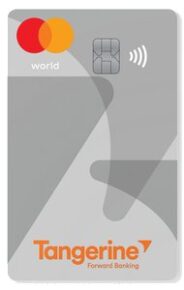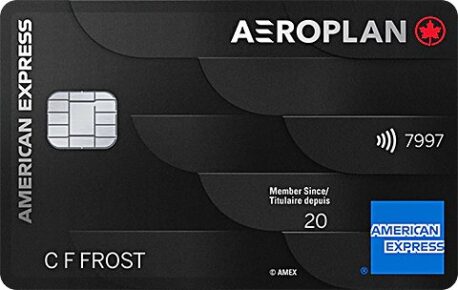Does Canada have a work-from-home tax credit? That’s a question many part- or full-time remote employees may be asking as another tax season approaches.
The short answer is yes: Your home office expenses can help reduce the amount of income tax you pay.
The full answer includes a few different conditions and caveats around how this particular tax benefit works, how to qualify for it, and how much you might receive.
What is the work-from-home tax credit?
Technically, the tax benefit you can get for working from home isn’t a tax credit at all, it’s a tax deduction. The difference is subtle, but important. Tax credits directly reduce the amount of tax you owe; tax deductions reduce your taxable income.
If you incurred certain expenses while working from home for an employer, you may be able to claim those expenses on your tax return. This may help reduce your taxable income, which may result in a smaller tax bill.
Nerd Tip: The working-from-home tax credit is only for salaried or commissioned employees who work from home — it’s separate from work-related expenses that you can deduct as a self-employed individual. If you run your own small business or do freelance work from home, you’ll want to investigate Canada’s business-use-of-home tax credits and deductions.
The temporary flat rate method is over
In response to the COVID-19 pandemic, the Government of Canada established a simplified method to claim the work-from-home deduction for the 2020 tax year.
The simplified system didn’t require you to keep supporting documents. Your employer also didn’t have to complete and sign Form T2200S or T2200. Basically, you could claim a flat rate of $2 for each day you worked at home due to the COVID-19 pandemic, up to a total of $400 per individual in 2020.
The temporary flat rate method was extended to cover the 2021 and 2022 tax years (and raised to a maximum of $500 per individual). According to a press release from the Canada Revenue Agency, the flat rate method does not apply to 2023 and beyond.
Eligibility for work-from-home tax relief
Now that the temporary flat rate method has ended, the only way to claim the working-from-home tax credit is to use the detailed method[1]. To do so, you must meet all of the following conditions:
- Your employer required you to work from home (via written or verbal agreement).
- You paid expenses related to your home work space.
- You spent more than 50% of your work time in your at-home work space for a minimum of four consecutive weeks in the year OR your at-home work space is only used to earn employment income (to include meeting with clients, customers or colleagues).
- The expenses you incurred are directly related to the work you do.
- You have a completed and signed copy of Form T2200, Declaration of Conditions of Employment, from your employer.
What’s an eligible work-from-home expense?
The list of expenses that can be claimed varies a bit depending on whether you’re a salaried or commissioned employee, but generally includes:
- Utility costs.
- Home internet fees.
- Maintenance and repair costs.
- Rent.
In some cases, required office supplies and phone expenses may also be claimed.
What counts as a work space?
When using the detailed method to deduct work-from-home expenses, you’ll need to figure out the size of your work space to calculate your deduction.
First, measure the overall size of your home, including all finished areas such as hallways, bathrooms, and your kitchen. Then, measure your work space relative to your overall space.
For example, if your apartment is 1,000 square feet and you work in an office measuring 10 feet by 10 feet, your work space is 10% of your home. You’ll then be able to deduct that portion of certain expenses related to working from home.
Your work space doesn’t need to be a formal desk or designated room. If you use your kitchen counter or the family computer to do your work, it would still qualify as a work space.
How to claim the work-from-home tax deduction
For the detailed method, you’ll need to complete Form T777S or T777. Additionally, you’ll need to get a completed and signed Form T2200S or Form T2200 from your employer, and to have kept records of your work-related expenses in case you get audited.
If you’re filing your tax return by hand, you’ll need to locate the necessary forms on the Government of Canada website. If working with a tax preparation professional or DIY tax software, all necessary forms should be provided for you.
Frequently asked questions about the work-from-home tax deduction
It’s a tax deduction. Tax credits directly reduce the amount of tax you owe; tax deductions reduce your taxable income.
The temporary flat rate method of deducting home office expenses was only applicable for the 2020-2022 tax years — it is not available for the 2023 tax year and beyond. You still use the detailed method to claim expenses, and the amount you can deduct will depend in part on the size of your at-home workspace.
Article Sources
-
Government of Canada, “Home office expenses for employees,” accessed December 21, 2023.
DIVE EVEN DEEPER

What are Canada’s Tax Brackets?
Tax brackets exist at both the federal and provincial or territorial level in Canada. Your income determines your tax bracket, and ultimately, the tax rate you’ll pay.

5 Tax Write-Offs Every Small Business Owner Should Know About
Run your own business? These deductions can significantly lower your tax bill.

How Canada’s Disability Tax Credit Works
The disability tax credit makes life more affordable for Canadians with disabilities and their caregivers by reducing the amount of income tax they owe.

T4 Slips: What Canadian Employees Should Know
A T4 slip is a tax document that summarizes your annual employment earnings as well as any deductions.







